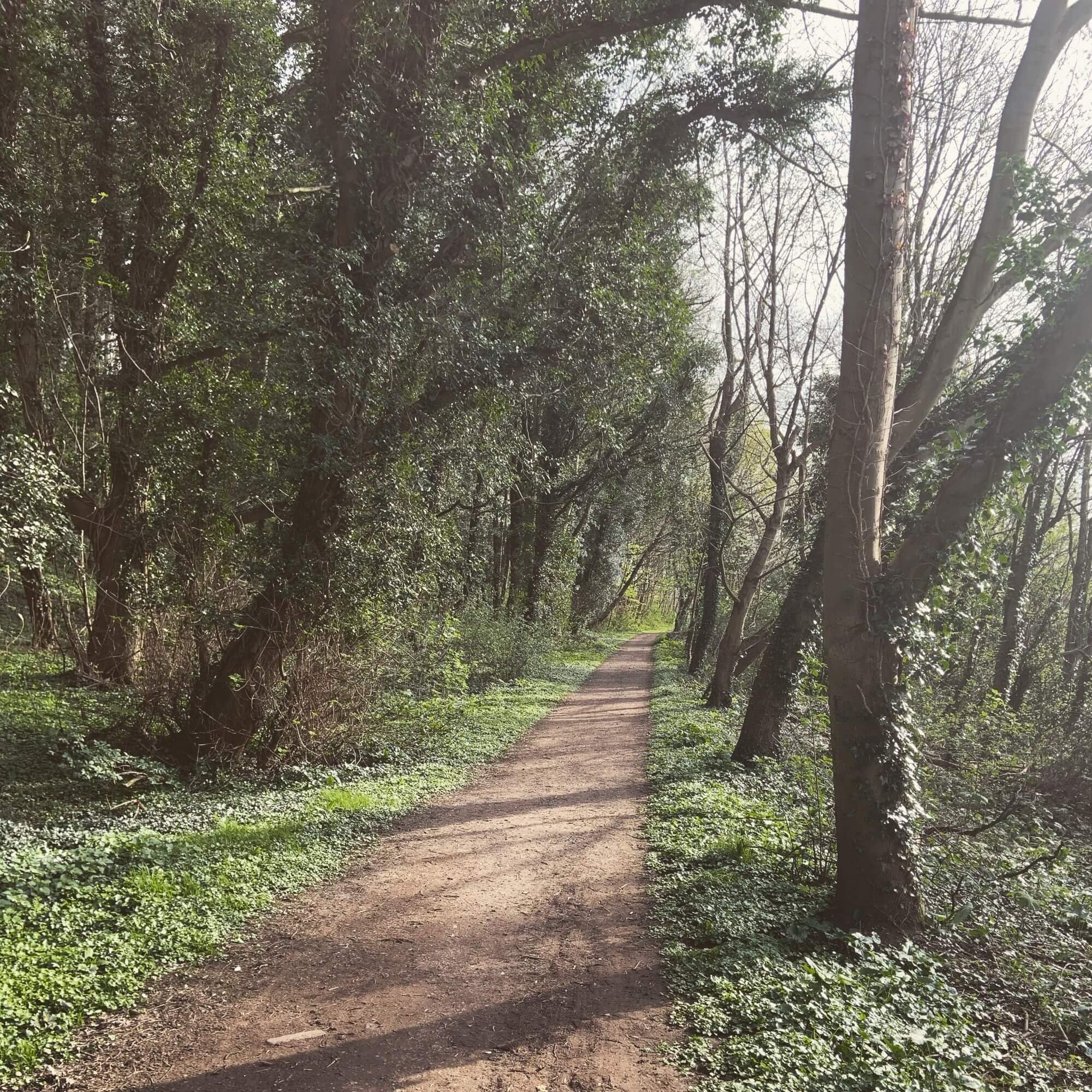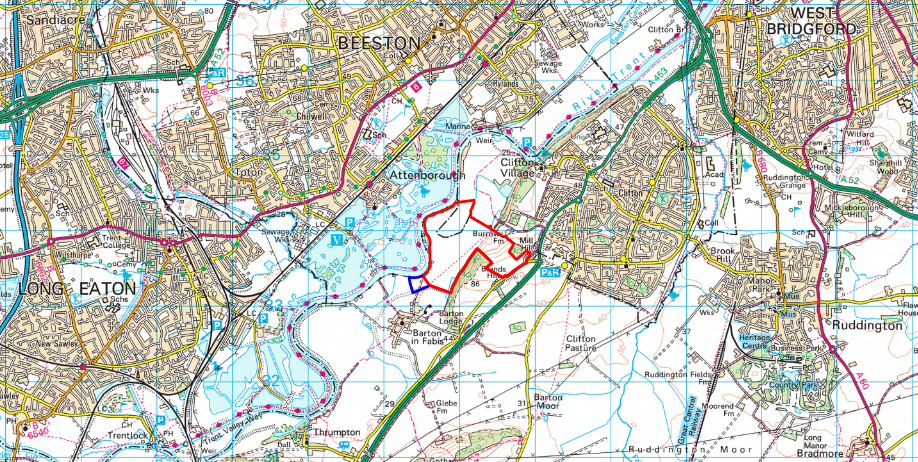
More information
Additional information regarding the quarry
We are delighted to have such compelling support from local MPs James Naish and Lilian Greenwood. Click the yellow buttons to view their objection letters.
Click below for the County Council’s letter outlining the further information requested as part of the 'Supplementary Information Request under Regulation 25'.
Click below for our Myths Busted PDF!
Other Objection Letters
The proposed site area is denoted by the red lined area here »
This is the area overlayed onto Nottingham city centre as scale to show the vast size the quarry would take over:
The affect on people and communities
In addition to the population of Barton, 26,000 people live within 1.5km of the site in Clifton. That’s why we are joined in our opposition by Gotham Parish Council, Thrumpton Parish Meeting, Clifton Village Residents Association and Lark Hill Residents Association.
Over 1,000 written objections were lodged by the local community to the planning application. The application was also opposed by the RSPB, Notts Wildlife Trust, Holme Pit Action Group, Ramblers Association, Rushcliffe Borough Council (Environmental Health Officer, Policy and Design and Conservation officers), Nottinghamshire County Council (Landscape, Heritage, Archaeology, Ecology, Rights of Way officers) and City Council.
We also have the support of all our local County, Borough and City Councillors and our MPs Lilian Greenwood and Ruth Edwards.
The development will impact on air quality in a populated area. The proposed processing plant overlooks Lark Hill Retirement Village which is sensitive to dust impacts, given that 40% of residents have breathing difficulties.
Gravel extraction will involve huge and heavy machinery removing all the soil layers to reach the gravel. It will be an extremely noisy and dusty operation and lorries and machinery will be operating on the site 6 days a week and 11 hours a day. In wetter times, there will need to be dewatering pumps running night and day.
The foot path that runs along the river in Attenborough is 70m from the edge of the site, is one of the most popular access routes across the reserve which, according to the RSPB attracts more than 600,000 visitors annually.
The parallel footpath between Clifton and Barton is also heavily used by walkers, cyclists and horse riders and no alternative realignment is possible.
The site will also require a giant processing site on the top of Mill Hill with 29,000 lorry movements each year on to Green Street which is a ‘quiet lane used by walkers, horse riders and cyclists and will significantly add to traffic levels at Mill Hill with delays and congestion on top of the impact from the new Fairham Pastures.
The affect on the environment
This proposal would devastate 79 hectares (200 acres) of prime wildlife habitat and feeding grounds for birds using Attenborough Nature Reserve.
If the quarry were to go ahead the whole valley area between the river and Clifton Woods would be lost for at least 12 years and even then, would never be the same.
The total destruction of this area of Green Belt means that dozens of species of birds and animals will be lost and the peace and quiet of the whole valley used by walkers and horse riders permanently damaged – remember how many people valued that during lockdown and continue to do so!
There are many resident red (endangered) and amber species that will likely be impacted by the development of the site.
The quarry will also have a huge impact on local wildlife sites. Two Sites of Special Scientific Interest - SSSIs (Attenborough Nature Reserve and Holme Pit) and 7 Local Wildlife Sites are directly or indirectly impacted by the proposed development. The woodlands of Brandshill and Clifton are officially designated as ‘Ancient Woodlands’ and would be impacted by habitat loss, noise, light and dust.
There is extensive ancient ‘ridge and furrow’ land adjacent to the proposed site, and the development would result in substantial harm during the operational phase to the setting of the Grade 1 listed Clifton Hall.


